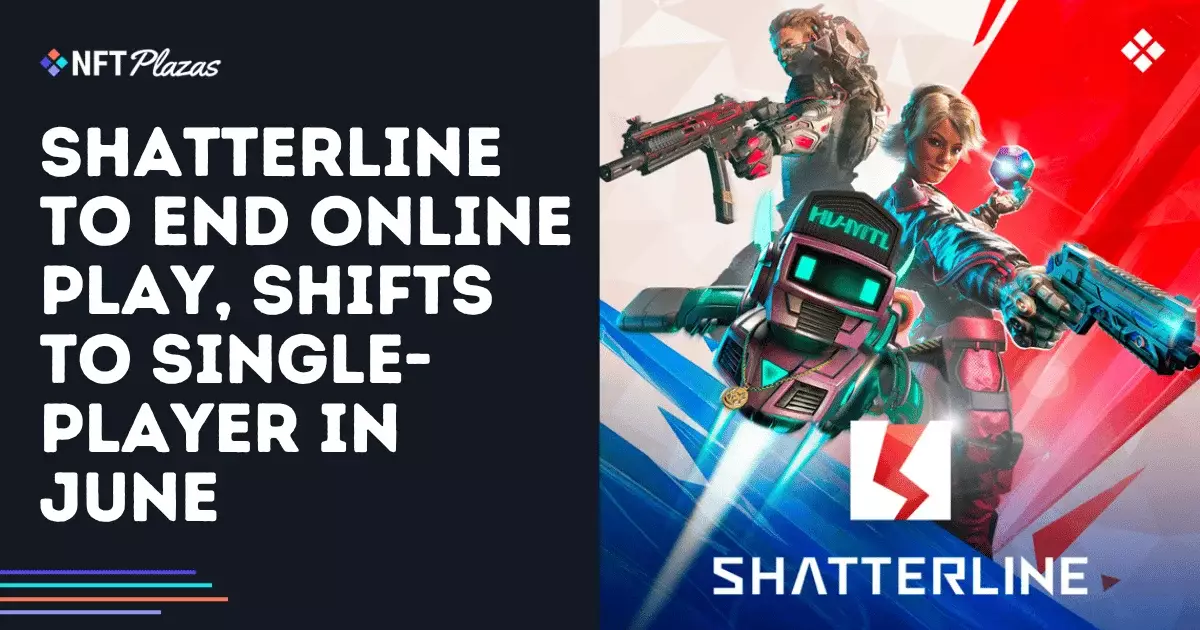In a bold but distressing pivot, the promising sci-fi first-person shooter Shatterline is shuttering its online servers, transitioning from a free-to-play multiplayer experience to a sole focus on single-player gameplay. Set to officially occur on June 26, this decision signals not only a dramatic operating shift but a deep-seated failure in sustaining the lingering promise of multiplayer gaming. When a game’s servers are turned off, it not only reflects a financial assessment; it stands as an indictment of the changing landscape of gaming, particularly in the realm of NFTs and online multiplayer experiences.
Failure to Captivate Players
Launched initially as an ambitious attempt to merge competitive gameplay with blockchain technology, Shatterline’s reality became far less glamorous as player engagement dwindled. Frag Lab, the studio behind the game, cited a declining player base as the primary factor leading to this drastic change. What’s bleakly ironic is that despite its launch in early access in 2022 and a later release on the Epic Games Store, Shatterline never achieved the critical mass needed for successful matchmaking—a fatal shortcoming in any multiplayer title. This ongoing struggle not only hampered its monetization efforts but also highlighted a fundamental disconnect between the gaming community and the developers’ vision.
Monetization Missteps and Community Outrage
At the heart of Shatterline’s downfall lies a series of monetization missteps that many from the gaming community have scrutinized. With blockchain elements that turned off many potential players and in-game purchases failing to attract meaningful revenue, Frag Lab found themselves mired in what could only be described as an existential crisis under the live-service model. Their choice to discontinue in-game purchases while issuing refunds indicates an acknowledgment of failure. The sentiment from the gaming community has ranged from frustration among loyal fans to an almost unbearable skepticism from those wary of NFT integrations. This echoes a larger narrative within the gaming industry: when financial strategies overshadow gameplay quality, disillusionment inevitably follows.
Rethinking the Future: A Shift to Single-Player
As Frag Lab commits to revamping Shatterline for single-player experiences, one must question the viability of this transition. While the studio plans to focus on enhancing offline content and maintaining core gameplay mechanics, this shift raises critical concerns about the game’s potential for rejuvenation. Will players, now acclimated to multiplayer frameworks, flock back for an isolated experience? The one-time purchase model presents an interesting, albeit risky, approach to monetize a game that was originally free-to-play. It remains to be seen whether career-long gamers and newcomers alike will embrace this adjustment as a favorable reimagining or a cynical farewell.
In scrutinizing Frag Lab’s choices, we cannot ignore the emerging patterns within the gaming industry. The rise and fall of Shatterline serve as a cautionary tale about the complexities and fragilities of merging traditional gaming with digital currencies and NFTs. As new players and old veterans navigate this terrain, the lingering question will remain: can single-player experiences find a sustainable foothold amidst the chaos of a once-thriving multiplayer dream? The answer will shape the future landscape of gaming for years to come.

